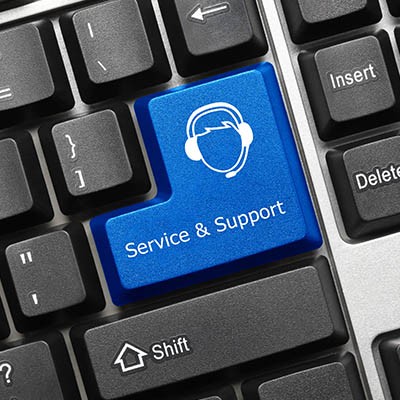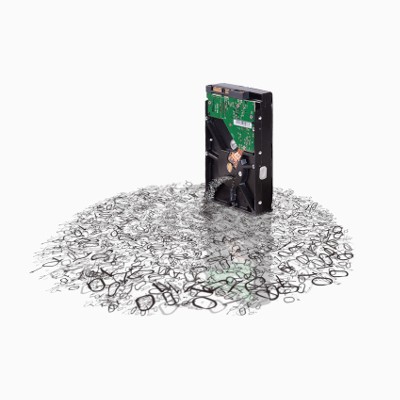Companies around the world have or are finding the need to send their workers home to prevent the spread of the novel coronavirus. For many business owners, managing your staff remotely is a brand new paradigm. Here’s what you need to know.
ZR Systems Blog
Businesses generate and collect a huge amount of data - some of it, practically useless, and some, critical to your business and its operations. It is this latter group that makes it so important that you have a comprehensive backup plan ready to go.
It has reached the point that, if you have a business, you had better have a backup prepared. Otherwise, the digital data that modern businesses like yours rely on is vulnerable to loss. Of course, depending on the age of your business, you may have data that no longer applies to your operations. That’s why we’re going over how to select the data you should continue to back up.
Computers sometimes appear to have a mind of their own. For businesses, this is less than ideal. If the support structure is not in place to take control of your business’ infrastructure, your business' profitability may be negatively impacted. In this five-part series, we will discuss how being proactive keeps your technology in check.
Old-school business information technology support isn’t necessarily wrong, but it most definitely isn’t cheap nor efficient. IT support strategies are developing in ways that some time ago, would have thought to be unheard of. Your business no longer needs a full on-site staff designated to maintaining network security or updating software. In part two of our five-part series, we discuss how your business can have the support it needs through managed services.
A data loss incident is considered a major disaster scenario, especially for small and medium-sized businesses. All it takes is one moment to lose your business’s entire data infrastructure. We’ll walk you through a story that should serve as a cautionary tale, one that hopefully teaches you to adhere to data backup and disaster recovery best practices.
Downtime is a killer for any business. When a business is forced into confronting its technology support deficits, it usually means that they’ve been dealing with too much broken technology and downtime, and the costs associated with it. One way your business can avoid losing huge chunks of time to broken technology is to add a professional help desk to support your IT administrator.
All businesses need some type of communication infrastructure, especially considering how connected today’s workplace is. Today we will look at some of the best communications solutions out there for businesses of all sizes and industries, including many that you may (or may not) have already implemented for yourself. You can use this knowledge to fuel improvements to your own communications infrastructure.
When considering a business’ strengths, there is a tendency to focus on its more quantifiable aspects - it generates x dollars in revenue, or leverages advanced solutions a, b, and c. While these kinds of competitive advantages are valuable to have, it is also important to recognize how critical one of your more qualifiable strengths can be: your company culture.
Do you know what can completely kill a business’ momentum? Downtime. Businesses of all types look for a myriad of ways to save themselves the headaches that come from significant downtime. One way that is sure to reduce an organization’s downtime is by having conscientious IT management and support at the ready. One problem with this is that it's typically costly to hire a team of IT professionals with the experience and knowledge to keep your technology up and running.
One industry that most people wouldn’t necessarily consider to be IT-rich is manufacturing. With automation becoming a major point of emphasis for many businesses, IT has taken on a larger role for today’s small and medium-sized manufacturers. Today, we will take a long look at what the manufacturer’s IT needs are, and what solutions they use to help steer their company forward.
Technology training is something that all employees have to go through at some point in their career, whether they are a CEO learning how to use a new solution, or an end user that uses it every day. However, we know that your employees don’t necessarily have time to sit down for training, as they likely have other responsibilities that must be tended to. How can you make sure technology training is a valuable investment on your part?
Technology can go a long way toward helping businesses be more productive with their time, but only if the solutions implemented are right and proper for your organization. We’ll discuss three services that you can provide for your business that can maximize productivity with technology solutions.
An internal IT department serves two primary purposes for businesses. The first is to keep an eye on your technology problems and resolve them. The second is to plan for the future and implement new strategies that will help your organization function more effectively. The problem for the average small business is that their IT department often doesn’t have the luxury of performing both of these tasks.
Keeping your workers as productive as possible is a challenge for every employer. According to a recent study by the Harvard Business Review, there is one easy that you can increase productivity: By keeping a productive worker in close proximity to other workers.
In today’s business world, having a reliable way to access your data is key to your company’s success. Everything you do depends on the data you have at your disposal--so what would you do if that data was no longer available to you?
Millennials are entering the workforce at a considerable rate. In fact, some experts claim that millennials will soon make up at least one-third of the entire workforce. Thus, it’s important for both employers and workers from previous generations to understand how this generation thinks, acts, feels, and most important of all, works.
Who manages the relationships that your organization has with its various vendors? Do you have someone who specifically handles this role, or is it pushed onto your already-full schedule? If this is something that takes up a significant portion of your day, vendor management (though necessary) can become a detriment. Thankfully, there is a better way to handle your vendor relationships, and it doesn’t involve stretching yourself thin.
Of all the potential causes for a deficit within the office environment, the physical office itself isn’t likely to first come to mind. Even so, the value of establishing certain practical design and organization strategies have shown to improve employee morale, collaboration, and productivity. While these solutions may not be for every office, if your company is experiencing hindrances in productivity, these tactics may be beneficial implementations to incorporate within your business.
Most modern businesses rely on specific technology solutions to ensure operations can work as intended. This includes servers for data storage, networks for data distribution, and workstations for employee productivity. Of course, you have to wonder if this is wise; after all, what happens when this technology fails?
Mobile? Grab this Article









































